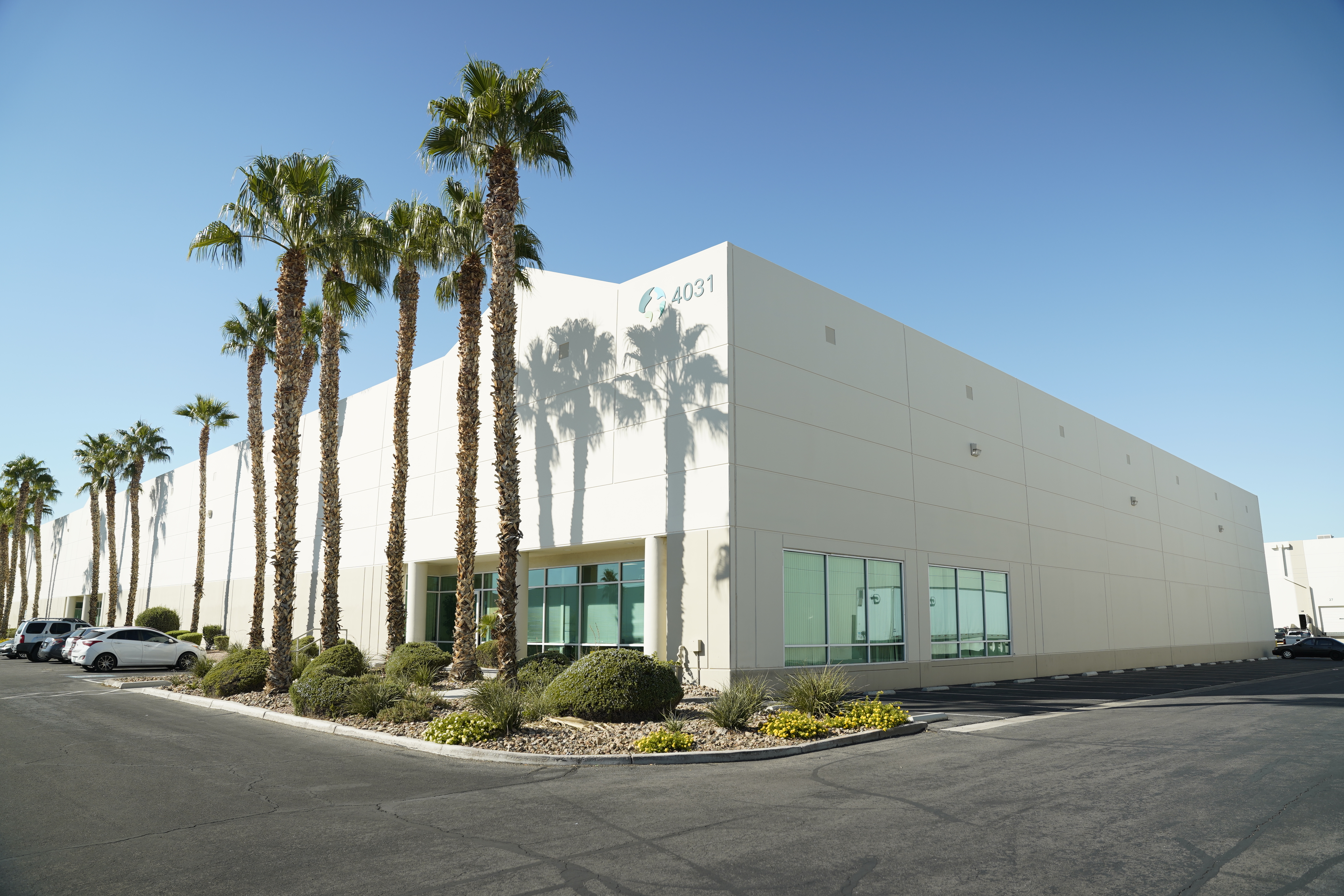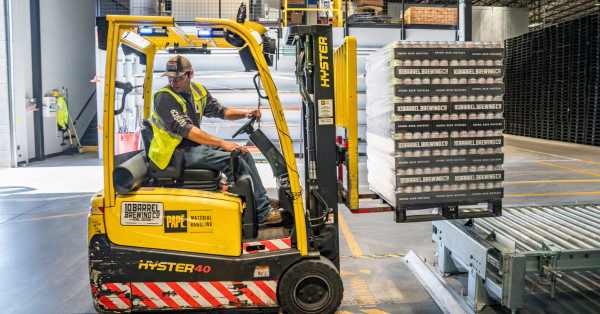Mastering eCommerce Order Fulfillment: A Comprehensive Guide to Streamlining Your Process and Hiring the Right Fulfillment Partner
Ship My Orders' Fulfillment Center in North Las Vegas
As a small business owner in the eCommerce business space, order fulfillment is one of the most critical aspects of your operation. It's the process of receiving, processing, and shipping orders to the customer base of online retailers.
The entire order fulfillment process can make or break your business, making it essential to choose the right eCommerce Fulfillment Company that meets your specific needs. In this comprehensive guide, we'll walk you through the key features and benefits of different providers, helping you make an informed decision.
Achieving excellence in eCommerce order fulfillment is now more accessible than ever. However, the crucial task of selecting an ideal fulfillment solution requires thoughtful consideration.
Your chosen partner should not only simplify the entire process but also collaborate closely with you to devise the most effective eCommerce order fulfillment strategies, ultimately aiming to make your customers happy. This decision should be approached with the utmost seriousness.
Understanding eCommerce Order Fulfillment
Order fulfillment is the process of receiving, processing, and shipping orders to customers- also referred to as PNP: Pick, Pack & Ship or PND: Pickup and Delivery. It's a critical component of the supply chain that ensures customer expectations are met by delivering orders accurately and on time.
The entire fulfillment process typically involves:
- storing products from clients who own an online business in a distribution center / fulfillment warehouse
- receiving the order through their integrated fulfillment software
- picking and packing the products using a packing slip or box
- shipping the items through reliable delivery partners to the final customer
Choosing the right fulfillment provider is crucial for small businesses and ecommerce companies. A suitable provider can help streamline an efficient order fulfillment process, reduce errors, and improve customer satisfaction.
The Importance of Efficient eCommerce Order Fulfillment
Efficient order fulfillment is crucial for businesses as it directly impacts customer satisfaction and overall success. Here are a few reasons why streamlining this process through effective fulfillment strategies should be a top priority:
-
Customer satisfaction: Timely and accurate order fulfillment ensures that clients receive their purchases promptly, leading to higher levels of satisfaction. This can result in repeat business and positive reviews, ultimately boosting your brand's reputation.
-
Reduced costs: Streamlined fulfillment software and processes reduce the likelihood of errors, such as shipping the wrong item or incorrect quantities. By minimizing mistakes, you can avoid costly returns or replacements and save on unnecessary expenses.
-
Enhanced productivity: An efficient order fulfillment system optimizes workflows by eliminating bottlenecks and reducing manual effort. With streamlined processes in place, your staff can focus on core tasks instead of spending excessive time dealing with orders manually.
The Key Steps in the eCommerce Order Fulfillment Process
1. Receiving and Processing Orders
The first step in the order fulfillment process involves your sales channels. Orders can be received from customers through phone calls, emails, or online marketplaces. Once received, the orders need to be accurately recorded and processed in a timely manner using a fulfillment software. This involves confirming inventory levels, determining international shipping details, and generating invoices. A seamless integration between your order system and the fulfillment partner is crucial to ensure a faster shipping to customers and a successful order fulfillment.
2. Picking and Packing Products
After processing the orders, it's time to pick the products from the inventory shelves based on customer requirements. Efficient picking methods can optimize productivity by minimizing travel distances within fulfillment centers. Once picked, the products are carefully packaged using suitable materials, often detailed on a packing slip, to ensure they arrive at their destination undamaged.
3. Shipping Orders and Delivery Tracking
With products picked and packed securely, it’s now time for shipping them to clients' locations. This typically involves partnering with reliable ecommerce fulfillment partners who will transport packages safely while adhering to specified timelines. To provide visibility into delivery progress for both businesses and customers alike, tracking numbers are assigned, offering a crucial fulfillment option for real-time monitoring.
Choosing the Right eCommerce Fulfillment Service
When it comes to order fulfillment, selecting the right Fulfillment Company is crucial for streamlining your business operations. Here are a few key factors to consider:
- Cost: Evaluate the pricing structure of potential fulfillment providers to determine how it aligns with your budget. Look beyond just the upfront fees and consider any additional charges, such as storage or handling fees.
- Scalability: Ensure that your fulfillment partners can accommodate your business's growth by offering flexible options. This includes being able to handle sudden spikes in demand or expanding into new online marketplaces seamlessly.
- Reliability: Assess the track record of the fulfillment service in delivering orders on time and intact. Look into their history with other clients, read reviews, and maybe even seek referrals. A reliable fulfillment partner is one that consistently meets delivery deadlines and maintains the integrity of your products during transit.
- Accuracy & Speed: Evaluate the fulfillment provider's ability to process orders accurately and efficiently. Accuracy in picking, packing, and shipping orders is crucial to minimize returns and customer complaints. Additionally, speed is essential in eCommerce – check their average turnaround times for order processing and delivery to ensure they align with your customer expectations and delivery promises.
In-House vs Outsourced Order Fulfillment: Pros and Cons
In-House Order Fulfillment:
Pros:
- Greater Control: You have complete control over the entire order fulfillment process.
- Brand Alignment: Easier to maintain your brand's values and customer service standards.
- In-House Expertise: Opportunity to build in-house expertise and maintain confidentiality of important business information.
- Customization Flexibility: Easier to implement custom packaging or personalized touches to enhance client experience.
- Direct Oversight: Immediate and direct resolution of any issues, leading to better quality control.
Cons:
- High Investment: Requires significant investment in warehouse space, equipment, and staff training.
- Limited Scalability: Constrained by physical inventory levels and space.
- Logistical Challenges: Increased fulfillment challenges such as managing logistics, inventory, international shipping carriers, etc.
- Operational Complexity: Need to manage multiple tasks like hiring, training, and scheduling.
- Limited Technology: Potential lack of access to advanced technology, requiring separate investments for scalability and automation.
Outsourced Order Fulfillment Services:
Pros:
- Specialized Expertise: Benefit from partners who specialize in order fulfillment.
- Cost-Effectiveness: Save on overhead costs like warehouse space, shipping supplies, and employee training.
- Time Savings: Allows businesses to focus on core competencies like product development or marketing.
- Quick Scalability: Easily scale operations up or down based on demand.
- Flexible Pricing: Variable pricing models adapt to your business needs.
- Global Reach: Easier expansion into new markets due to international warehousing and distribution.
- Technology Access: Utilize the latest in automation and inventory management technology.
- Reduced Risk: Mitigation of risks associated with inventory, shipping, and demand fluctuations.
Cons:
- Limited Control: You lose some control over the fulfillment process, which may impact client satisfaction.
- Quality Risk: Possible quality issues if the third-party does not meet your expected standards.
- Hidden Costs: Additional fees for services like returns, storage, or special projects may apply.
- Data Security: Potential risk associated with sharing sensitive customer data with a third party.
By weighing these pros and cons, you can make an informed decision that best suits the needs and growth plans of your business.
Considering to Switch to a New 3PL Provider for eCommerce Fulfillment? Let's craft the Ideal Strategy for Your Business: Get a Free Transition Consultation!
Are product fulfillment issues affecting your bottom line? Our experts are ready to assess your unique challenges and recommend the perfect solution. Schedule your free consultation today to take the first step in optimizing your order fulfillment process!
👉 Download Our Transition Strategy Guide & Schedule a Free Consultation
Common Challenges in Order Fulfillment and How to Overcome Them
1. Inventory Management Issues: A Prevalent Fulfillment Challenge
One common challenge in order fulfillment is managing inventory effectively. Lack of accurate inventory data can lead to overstocks or stockouts, causing delays in order processing and customer dissatisfaction.
- Solution: Implement a robust inventory management system that integrates with your fulfillment software, offering real-time stock level tracking. This system should update automatically when an item is sold or received, providing end-to-end visibility into your supply chain. Regularly conduct physical counts to reconcile discrepancies, ensuring your eCommerce business operates seamlessly.
2. Packaging and Shipping Complexity: Balancing Cost and Safety
Ensuring products are adequately packaged for safe delivery while minimizing international shipping costs can be challenging for businesses aiming to expand their client base globally.
- Solution: Many fulfillment centers now offer automation technologies like packaging machines that measure, box, seal, weigh, and label items according to predefined criteria. This reduces human errors while improving the efficiency of your order fulfillment process.
The Role of Technology in Streamlining Order Fulfillment
Technology plays an essential role in creating an efficient order fulfillment process, crucial for any eCommerce business aiming to meet customer expectations.
- Automation: Automation technology, such as robotics and conveyor systems, can significantly speed up the order fulfillment process by eliminating manual tasks and reducing human error.
- Inventory Management Systems: Modern inventory management systems allow businesses to accurately track stock levels, ensuring that products are always available when customers place an order.
- Barcode Scanning: Barcode scanning technology enables quick and accurate product identification during picking and packing stages, reducing errors and improving efficiency.
- Real-Time Tracking: Advanced tracking technologies enable businesses to monitor the status of orders in real-time from warehouse to client delivery, providing transparency for both employees and clients.
By leveraging these technological advancements, businesses can streamline their order fulfillment process, reduce costs, minimize errors, improve customer satisfaction levels - ultimately gaining a significant competitive advantage in today's fast-paced marketplace.
Strategies for Managing Inventory and Stock Levels
1. Regularly Forecast Demand
Accurately predicting customer demand is essential for managing inventory and stock levels effectively. Utilize historical sales data, market trends, and client feedback to forecast future demand. By having a clear understanding of the demand patterns, you can avoid overstocking or running out of popular products.
2. Implement Just-in-Time (JIT) Inventory System
Adopting a just-in-time inventory system allows you to minimize holding costs by receiving goods only as they are needed for production or order fulfillment. This strategy helps prevent excess inventory buildup and reduces storage expenses. However, it requires close collaboration with suppliers and reliable logistics to ensure timely delivery.
3. Optimize Storage Space
Maximizing your storage space efficiency is crucial in maintaining optimal stock levels without incurring unnecessary expense on additional warehouse space. Consider implementing vertical shelving systems, using racking solutions that optimize floor capacity, and utilizing automated warehouse management software to streamline picking and replenishment processes.
4. Prioritize Fast-Moving Products
Identify high-demand items that contribute significantly to your revenue stream and allocate more attention to monitoring their availability consistently. Strengthen your supply chain partnerships with reliable suppliers who can quickly restock these fast-moving products when necessary. The goal is to maintain optimum stock levels without tying up financial resources in slow-selling items.
5. Cycle Count Regularly
Conducting regular cycle counts involves auditing a small portion of the overall inventory frequently rather than performing full physical inventories. This method allows you to identify discrepancies between actual quantities on hand versus what the system records. Invest in barcode scanners or RFID technology for accurate tracking results. Through consistent cycle counting, you can catch errors early on, reducing the risk of carrying inaccurate stock records while preventing unexpected shortages during peak periods. Routine checks lead to better accuracy in forecasting, demand planning, and order fulfillment.
Transform Your Inventory Management with Our Advanced System Tired of dealing with stockouts and overstocks? Our advanced Inventory Management System offers real-time tracking and integrates seamlessly with your existing setup. Start benefiting from pinpoint accuracy and end-to-end visibility today!
👉 Learn More About Our Advanced Inventory Management System
Order Processing: Best Practices for Accuracy and Speed
When it comes to order processing, accuracy and speed are crucial for providing a seamless customer experience. Here are some best practices to streamline your process:
- Maintain Clear Communication: Establish effective lines of communication with your suppliers and customers to ensure everyone is on the same page regarding order details. Whether through emails, phone calls, or even automated systems, clear communication reduces misunderstandings and minimizes errors.
- Automate Where Possible: Utilizing technology can improve accuracy and speed in order processing. Implementing an order management system that integrates with your inventory and shipping processes eliminates manual data entry errors. This automation streamlines the workflow, reducing human error significantly.
- Prioritize Inventory Management: Regularly update your inventory levels to avoid overselling or running out of stock. By employing robust inventory tracking software, you gain real-time visibility into stock levels, enabling you to replenish products promptly when necessary.
Remember, accurate and speedy order fulfillment is key to customer satisfaction and loyalty – by implementing these best practices; you can enhance efficiency while minimizing errors.
Packaging and Shipping: Tips for Cost-Effective and Secure Delivery
Choose the right packaging materials
Using appropriate packaging materials can help ensure your products arrive safely to their destination without incurring unnecessary costs. Consider using sturdy boxes or padded envelopes for fragile items, while opting for lightweight options like poly mailers for smaller, less delicate products. Bubble wrap, packing peanuts, or air cushions can provide additional protection during transit.
Efficiently organize your shipping process
Streamlining the shipping process can save you time and money. Keep all necessary supplies (such as labels, tape, and scissors) within easy reach to avoid delays. Efficiently organize your inventory so that picking and packing orders becomes a seamless process. Utilize software solutions that enable batch printing of shipping labels to expedite fulfillment.
Negotiate shipping rates with carriers
To cut down on costs associated with shipping, negotiate favorable rates with carriers based on your volume of shipments. Compare different carrier services to find the best fit for your business needs—consider factors such as reliability, speed of delivery, and pricing structures. Implementing automated systems that generate discounted shipping labels can also contribute to significant savings over time.
By following these tips for cost-effective packaging and secure delivery, you'll be able to streamline your order fulfillment process while maintaining customer satisfaction. Remember that efficient packaging not only helps protect your products but also contributes to reducing expenses in the long run.
The Impact of Order Fulfillment on Customer Satisfaction
Order fulfillment plays a crucial role in ensuring customer satisfaction. When orders are fulfilled accurately and efficiently, clients are more likely to have positive experiences with a company. On the other hand, delayed or incorrect shipments can lead to frustration and disappointment.
1. Timely Delivery: One of the key factors influencing customer satisfaction is the speed at which orders are delivered. Customers appreciate prompt delivery as it allows them to receive their purchases quickly and continue with their plans or projects.
2. Accurate Order Processing: Another important aspect of order fulfillment is accuracy in processing orders. Clients expect to receive exactly what they ordered without any mistakes or substitutions. Failing to meet this expectation may result in returns, exchanges, and an overall negative impression of the company's reliability.
3. Communication and Transparency: Effective communication throughout the order fulfillment process also contributes to client satisfaction. Keeping clients informed about their order status and providing tracking information instills confidence in their purchase decision.
By focusing on these aspects of order fulfillment, companies can enhance customer satisfaction levels and cultivate long-term relationships with their client base.
Returns and Exchanges: Handling the Reverse Logistics Process
Managing returns and exchanges is a crucial part of order fulfillment. Here's how you can streamline the reverse logistics process:
- Implement Clear Return Policies: Clearly communicate your return policies to customers, including time limits for returns and any applicable fees. This helps manage client expectations and reduces confusion.
- Simplify Return Authorization: Make it easy for customers to initiate a return or exchange by providing a simple online form or contact method. Streamlining this process ensures prompt response and improves client satisfaction.
- Efficient Returns Processing: Once a return is received, have a dedicated team responsible for inspecting returned items in a timely manner. By promptly processing returns, you can speed up refunds or exchanges for customers.
- Inventory Management: Integrate your returns system with your inventory management software to keep track of returned items accurately. This allows you to quickly update stock levels and plan for replenishment.
- Analyze Return Reasons: Regularly analyze the reasons behind returns to identify recurring issues with products or shipping processes that need improvement. Addressing these issues proactively will help reduce future returns.
By following these steps, you can create an efficient reverse logistics process that minimizes delays, provides better customer service, and ultimately boosts your bottom line.
Order Fulfillment Metrics: Key Performance Indicators to Track
Order Fulfillment Metrics
To effectively streamline your order fulfillment process, it is essential to track key performance indicators (KPIs) that provide insight into its efficiency and effectiveness. By monitoring these metrics, you can identify areas for improvement and make data-driven decisions to optimize your operations.
Here are some crucial KPIs to track:
- Order cycle time: This metric measures the time it takes from receiving an order to delivering it to the client. A shorter cycle time indicates a more efficient fulfillment process, while delays may signify bottlenecks or inefficiencies in various stages of fulfillment.
- Perfect order rate: The perfect order rate measures the percentage of orders that are fulfilled without any errors or issues. It includes factors like accurate picking, packaging, shipping, and on-time delivery. Aim for as close to 100% as possible to ensure customer satisfaction.
- Inventory accuracy: Tracking inventory accuracy is crucial for avoiding stockouts or overselling products. Regularly compare physical inventory counts with recorded quantities in your system to identify discrepancies and act on them promptly.
- Return rate: A high return rate can be indicative of problems like incorrect orders, damaged products during shipment, or poor quality control processes. Monitoring this metric will help you uncover underlying issues affecting customer experience and take corrective actions.
- Shipping cost per order: Tracking shipping costs per order helps you evaluate the efficiency of your logistics network, negotiate better rates with carriers if applicable, and identify opportunities for cost savings through optimization strategies such as batch processing or route planning.
By consistently monitoring these vital metrics across your fulfillment operations, you can gain valuable insights into areas where improvements can be made—ultimately enhancing overall operational efficiency and maximizing customer satisfaction.
Integrating Order Fulfillment with Your E-commerce Platform
When it comes to order fulfillment, integrating your ecommerce platform can make a world of difference in streamlining your process. By connecting your ecommerce platform with your order fulfillment system, you can automate tasks and improve efficiency.
- Choose the right integration solution: Look for an integration solution that seamlessly integrates your ecommerce platform with your order fulfillment system. This will enable real-time syncing of orders, inventory levels, and shipping information.
- Automate order processing: With integrated systems, orders can be automatically imported from your ecommerce platform into the order fulfillment system. This saves time by eliminating manual data entry and reduces the risk of errors.
- Optimize inventory management: Integration allows for accurate tracking of inventory levels across both platforms. When an item is sold on your ecommerce platform, it is automatically deducted from the available stock in the order fulfillment system. This helps prevent overselling or running out of stock.
By integrating order fulfillment with your ecommerce platform, you'll not only save time but also reduce errors and improve customer satisfaction. It's a strategy well worth considering for any business looking to streamline their operations.
Understanding Fees and Delivery Time in Ecommerce Order Fulfillment
The Dynamics of Fulfillment Cost
For ecommerce merchants, understanding the intricacies of fulfillment cost is key to shaping an effective ecommerce fulfillment strategy. These costs often encompass a range of fees, from storage fees at the ecommerce fulfillment center to specific fulfillment fees tied to the processing of orders.
-
Storage Fees: These are influenced by the storage locations and the amount of space your inventory occupies. Storage costs can vary based on the type of products, with unique requirements for items like subscription boxes or oversized products.
-
Fulfillment Fees: Typically, this includes the cost of picking, packaging products, and preparing for shipment. It’s vital for ecommerce stores to consider these operational costs while planning their budget.
Shipping Methods and Their Impact on Cost
Ecommerce fulfillment is closely tied to shipping - from affordable shipping options to faster shipping times, the choice can significantly impact customer loyalty.
-
Range of Shipping Options: Offering a variety of shipping methods, such as 2-day shipping, ground shipping, and standard delivery, allows flexibility for customers. While faster shipping times like 2-day shipping may attract higher rates, they can enhance the customer experience.
-
Shipping Discounts: Partnering with a third-party provider can sometimes yield shipping discounts, reducing the average shipping cost. This is especially beneficial for businesses with high Monthly Order Volume or sales volume.
-
Delivery Methods and Speeds: The delivery speeds depend on the chosen delivery methods. While ground shipping might be an affordable option, expedited shipping can provide faster delivery times at a higher cost.
Operational Costs and Control Over Shipping
Ecommerce fulfillment process efficiency directly impacts operational costs. While some ecommerce merchants opt for fulfillment in house to maintain control over shipping, others prefer the expertise of a third-party provider.
-
Dimensional Weight Considerations: Shipping costs can also be influenced by dimensional weight, which takes into account both the size and weight of the package. This is a crucial factor for ecommerce stores to consider when determining shipping costs.
-
Affordable Shipping and Customer Experience: Balancing affordable shipping with a delightful customer experience can be challenging. It's important to find a middle ground that ensures customer satisfaction without escalating costs unduly.
Scaling Your Order Fulfillment Process as Your Business Grows
Prepare for Growth with Scalable Systems
When your business starts to experience growth, it's crucial to have scalable systems in place for order fulfillment. These systems need to be able to adapt and handle higher order volumes without causing bottlenecks or delays. Invest in technology that can automate certain parts of the process, such as inventory management, picking and packing, and shipping labels generation.
Optimize Warehouse Layout and Storage
As your business grows, you'll likely need more warehouse space to accommodate the increasing number of orders. Take the time to optimize the layout of your warehouse for efficient order fulfillment. Arrange products strategically so that popular items are easily accessible and closer to packing stations. Consider implementing a barcode or RFID system to help streamline inventory management and reduce errors.
Streamline Communication Channels
With an expanding business comes a larger team involved in the order fulfillment process. It's essential to establish clear communication channels among different departments involved, including customer service, warehousing, shipping, and purchasing teams. Regular meetings or check-ins can help ensure everyone is on the same page regarding expectations and any potential issues that may arise.
Continually Monitor Performance Metrics
As you scale your order fulfillment process, regularly monitor key performance metrics like order accuracy rate, average processing time per order, shipping costs, and customer satisfaction feedback. Identifying areas where improvements can be made will enable you to refine your processes further as necessary.
Outsourcing Order Fulfillment: How to Choose the Right Partner
How to Choose the Right Partner for Outsourcing Order Fulfillment
When it comes to outsourcing order fulfillment, selecting the right partner is crucial for streamlining your process. Here are a few key considerations to keep in mind:
- Evaluate their experience: Look for a fulfillment partner with extensive experience in handling orders similar to yours. A knowledgeable partner will understand the complexities of your industry and be better equipped to meet your specific requirements.
- Assess their technology capabilities: Ensure that any potential partner uses advanced technology systems, such as inventory management software and automated order processing. This will help streamline operations and minimize errors.
- Consider their scalability: As your business grows, so should your fulfillment needs. It's important to choose a partner capable of scaling up operations seamlessly without compromising on efficiency or quality.
- Evaluate their reputation: Read customer reviews and testimonials from other businesses who have used the services of prospective partners before making a decision. This can give you insights into their reliability, customer service, and overall performance.
Choosing the right outsourced fulfillment partner can significantly improve your order fulfillment process by saving time, reducing costs, and enhancing customer satisfaction levels.
Enhancing E-commerce Efficiency with Third-Party Fulfillment
Streamlining Operations with Third-Party Logistics
In the ever-evolving landscape of e-commerce, the bridge from products to customers is underpinned by a reliable fulfillment process. Leveraging third-party logistics (3PL) offers businesses a robust solution to the challenges of order dispatch - transcending seasons and trends. A third-party fulfillment partner extends beyond inventory storage; they provide a strategically positioned warehouse location, optimal packing materials, and an efficient fulfillment model that can pivot as your business needs change.
The Role of Supply Chain Management in Customer Retention
The cornerstone of customer satisfaction lies in the seamless execution of supply chain management. An experienced third-party logistics provider excels in fulfilling complex shipping requirements with an efficacy that only a calculated shipping strategy can ensure. Their expertise in managing shipping times and methods can elevate a business's fulfillment rate, effectively circumventing common customer service issues — such as the misfortune of delivering the wrong product.
Opting for third-party fulfillment not only makes logistical sense but also positions customer satisfaction at the forefront of your operational focus. Whether scaling up in step with business growth or ensuring the day-to-day orders flow with precision, the right 3PL partner turns fulfillment into a competitive edge.
Make the strategic decision to integrate third-party logistics services into your e-commerce operations. This paves the way for you to fortify your brand promise with every order fulfilled, regardless of the seasonal highs or the unexpected surges in demand.
Key Takeaway
Developing a robust ecommerce fulfillment strategy involves a careful examination of various factors like fulfillment cost, delivery time, and shipping methods. Whether you opt for fulfillment in house or partner with a third-party provider, the goal should be to offer affordable shipping options while ensuring packaging and delivery methods align with the product type and customer expectations. Remember, the right fulfillment choices can significantly enhance the overall customer experience, fostering loyalty and repeat business.
Unlock Your Business Potential: Request a Quote Today!
Is your business struggling with order fulfillment challenges? Don’t leave your profits to chance. Request a transition strategy plan & quote now to discover how our tailored solutions can streamline your process and elevate your customer satisfaction!
👉 Request a Transition Strategy Plan & Quote Now





-1.png)


